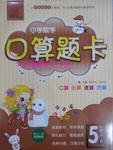题目内容
Many objects that people use each day started with a simple idea.These objects have often changed the way we 1 . Some help us to do a job more 2 . Others fill a need or solve a problem.
In 1858 H.L. Lipman had such an 3 . He 4 out a pencil, a piece of paper, and an eraser. Then he began to write. Sometimes he needed to 5 a word. Each time he had to search under his books and papers to 6 the eraser. “I wish my eraser would stay in one 7 !” he said.
Then Lipman had his simple idea .He 8 a groove in one end of the pencil .He glued the eraser into this groove. Lipman had solved his problem .Later he thought that others might like to have such a pencil. So he sold his 9 . Soon pencils with erasers were 10 . His design earned him $100,000.
1.A.study B.live C.sleep D.walk
2.A.easily B.correctly C.carefully D.normally
3.A.article B.aim C.idea D.action
4.A.got B.took C.brought D.put
5.A.spell B.read C.write D.change
6.A.look B.see C.watch D.find
7.A.place B.desk C.book D.hand
8.A.marked B.prepared C.cut D.invented
9.A.books B.pencil C.design D.eraser
10.A.wonderful B.expensive C.colorful D.common
1-10:B A C B D DACCD

 口算题卡北京妇女儿童出版社系列答案
口算题卡北京妇女儿童出版社系列答案One of the best-loved American writers was William Sydney Porter, or O.Henry. From 1893 he lived with his family in a house in Austin, Texas, which is now a museum. Visitors to Austin can see the house. It was saved from destruction (破坏) and turned into a museum in1934. The museum is a good way to learn about the interesting life of the American writer.
William Porter rented this house in Austin and lived there with his wife Athol and daughter Margaret for about two years. Many objects in the museum belonged to the Porters. Others did not. An important piece in the room is the original photograph over here. It was taken there in the house about 1895. The piano there goes back to the 1860s. His wife took lessons on it when she first moved to Austin.
Porter did not start his career as a successful writer. He worked at a farm, land office and bank. He also loved words and writing. The museum has a special proof of Porter’s love of language --- his dictionary. It is said that he had read every word in that dictionary.
Later William Porter was forced to leave Austin because he was charged with financial wrongdoing at the bank and lost his job. Because he was afraid of a trail (审判), he left the country secretly. But he returned because his wife was dying. After her death, he faced the trial and became a criminal. He served three and a half years in a prison in Ohio.
William Porter would keep his time in prison a secret. But there was one good thing about it. It provided him with time to write. By the time he was freed, he had published 14 stories and became well known as O.Henry.
Porter later moved to New York City and found great success there. He published over 180 stories in the last eight years of his life.
1.O.Henry’s house in Austin has been well kept up till now so that ____.
A. Americans can explore their history
B more visitors will be attracted to Austin
C. visitors can learn about O.Henry’s life
D. it can show the way of life in the 1860s
2.What do we know about the piano in the house?
|
A.It was hated by Porter’s daughter. |
|
B.It has a long history of about 150 years. |
|
C.Porter’s wife gave music lessons on it. |
|
D.Porter usually created music on it. |
3.How does the museum prove (证明) Porter was fond of language?
|
A.With a dictionary he used. |
B.With the records they keep. |
|
C.Using the books they wrote. |
D.Using the photograph they keep. |
4.Why did Porter escape from Austin?
|
A.He didn’t want to lose his job. |
B.He didn’t want to make trouble. |
|
C.He meant to save his wife’s life. |
D.He was charged with a crime. |
5.From the last two paragraphs we know that _______.
|
A.Porter became famous suddenly |
|
B.Porter spent his time in prison writing |
|
C.Porter suffered a lot from his time in prison |
|
D.life in prison provided what he could write for Porter |